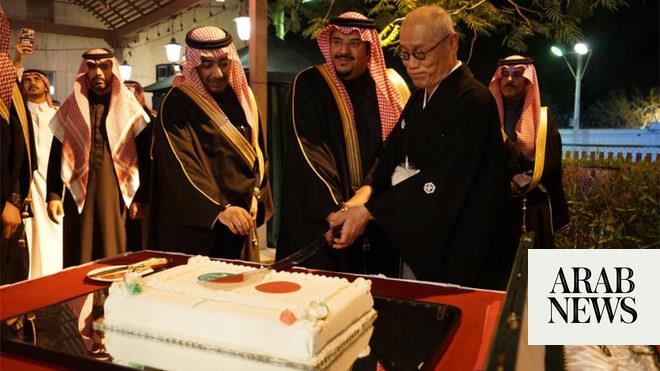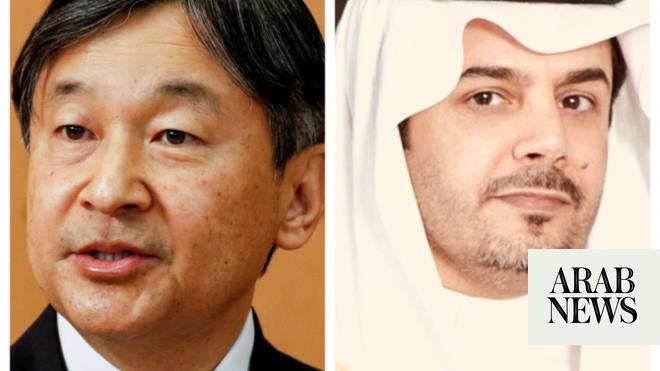
Ritual-bound, centuries-old ceremony takes places at Imperial Palace in Tokyo
Heads of state and officials from Japan and 180 countries among the attendees
TOKYO: It was a ceremony similar to coronations used by monarchs worldwide, but combining the historical and the spiritual with modernity. Japan’s Emperor Naruhito formally completed his ascension to the Chrysanthemum Throne at the Imperial Palace in Tokyo on Oct. 22.
Purple curtains were drawn back to reveal Naruhito, 59, and Empress Masako, 55, standing before their imperial thrones as the enthronement ceremony began.
Wearing a dark orange robe, similar to that worn by his father Akihito at his own enthronement in 1990, Naruhito proclaimed his ascension from a 6.5 meter-high, canopied “Takamikura” throne.
Through the centuries-old ceremony, Naruhito declared himself Japan’s 126th emperor and vowed to “stand with the people” before roughly 2,000 guests, including heads of state and officials from Japan and more than 180 countries. Among the attendees were Japanese royal family members also wearing traditional robes.
In his congratulatory message to the emperor, Prime Minister Shinzo Abe promised that the people of Japan would “respect (his) highness the emperor as the symbol of the state and of the unity of the Japanese people.” He then stood before Naruhito’s throne, bowed and raised his hands three times, shouting “banzai,” meaning “long live the emperor.”
Saudi Arabia was represented by Minister of State Prince Turki bin Mohammed bin Fahd bin Abdul Aziz, who conveyed greetings from King Salman and Crown Prince Mohammed bin Salman to the Japanese people.Saudi Ambassador to Japan Naif bin Marzouq Al-Fahadi, and other Saudi officials, were also present.
The enthronement ceremony is a part of a succession of rituals that began in May when Naruhito inherited the throne, after Akihito became the first emperor to abdicate in 200 years.
As Naruhito ascended the throne, boxes containing items of imperial regalia, including an imperial sword and jewel, were presented to him.
“Having previously succeeded to the Imperial Throne in accordance with the constitution of Japan and the Special Measures Law on the Imperial House Law, I now … proclaim my enthronement to those at home and abroad,” the Japan Times newspaper quoted Naruhito as declaring.
“I pledge hereby that I shall act according to the constitution and fulfill my responsibility as the symbol of the state, and of the unity of the people of Japan, while always wishing for the happiness of the people and the peace of the world, turning my thoughts to the people and standing by them.” An imperial procession that was to take place after the ceremony was postponed after Typhoon Hagibis hit Tokyo earlier this month. On Nov. 10, the emperor and empress will take part in a procession through central Tokyo to the Akasaka Imperial Residence.
To mark the enthronement, the government has granted pardons to more than half a million people found guilty of petty crimes such as traffic violations.
In an article for Arab News, Shihoko Goto, deputy director for geoeconomics at the Asia Program of the US think tank the Wilson Center, asked a question she believes will be echoed by many in Japan: “Can the country carry on its historical legacy while embracing the opportunities of the 21st century? “The new imperial couple is likely to want to further Emperor Akihito’s legacy as a conduit for reconciliation.”












